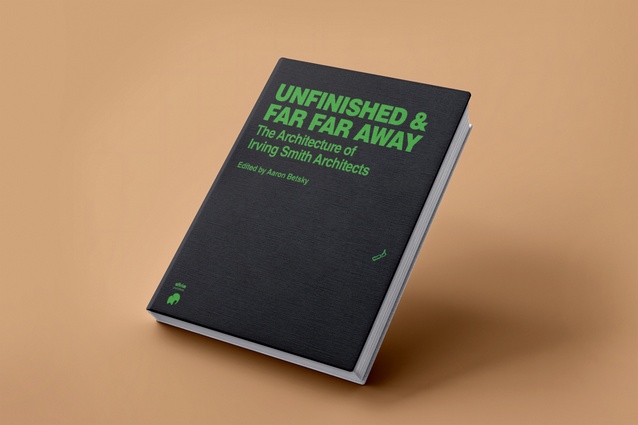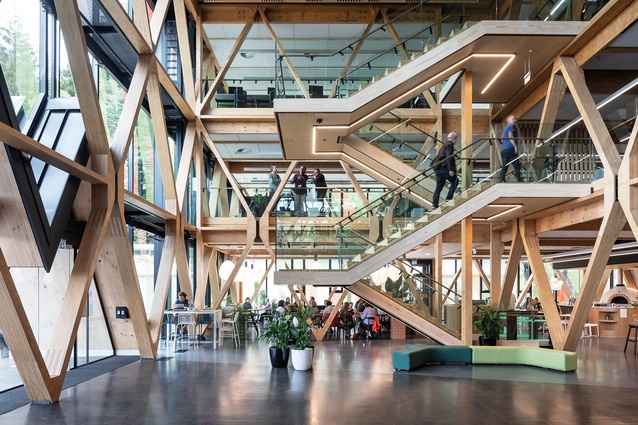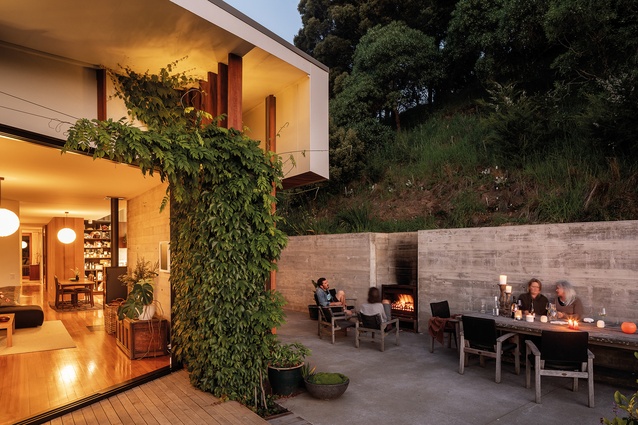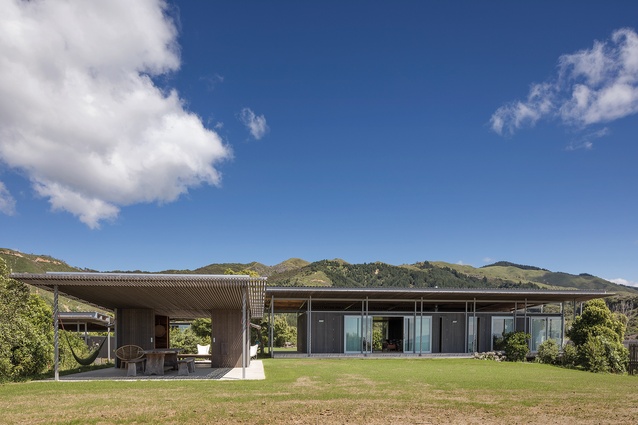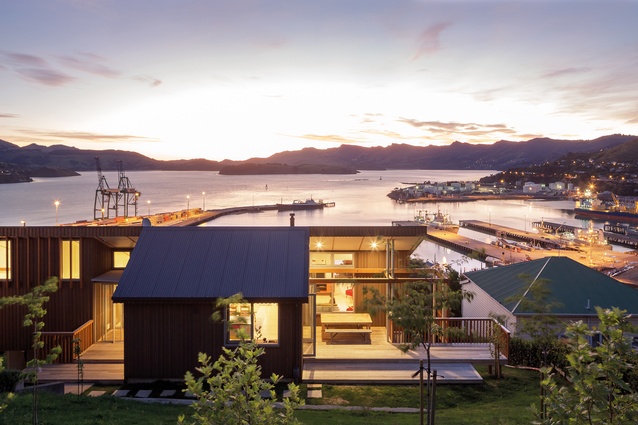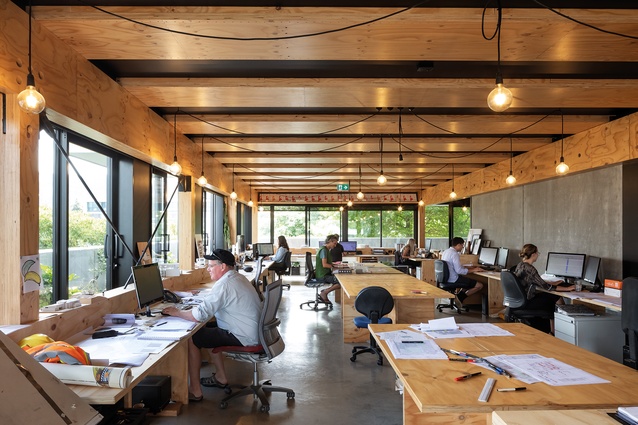Book review: Unfinished & Far Far Away: The Architecture of Irving Smith Architects
Ambition is a drive with a metropolitan destination. Even in the contemporary, connected world, it takes far more than a village to provide the opportunities for high-level self-actualisation.
More than a provincial town, too. It takes determined ingenuity to combine living in a small city with engagement in the big world, especially if that small city is, on most maps, far, far away.
Step forward Jeremy Smith and, with him, Andrew Irving, partners in the Nelson practice Irving Smith Architects. Smith is an alternative incarnation of ambition in a profession in which the trait is most overtly advertised by the monochromatic altcorporate uniform of certain large practices. In contrast to these Jesuits, Smith seems more akin to a mendicant friar, loosely garbed and lightly shod, but just as dedicated in his commitment to his message and the mission of spreading it widely. He pops up all over the place: designing buildings in Rotorua, Lyttelton and Whakatāne; teaching studios in Auckland, Arkansas and South Africa; presenting projects in Berlin, Barcelona and Singapore; judging awards in Italy; advising an architecture school in India; and writing for numerous publications. There must be a yin to all this yang; back in Nelson, Andrew Irving, in addition to his own design work, presumably has the primary responsibility for keeping the practice fires burning.
Smith’s career has been resolutely self-guided. He already had a science degree — his geology major suggests an early interest in the terra that’s not exactly firma of Aotearoa — before he enrolled at the University of Auckland’s School of Architecture. He took a job in Melbourne with Peter Elliott, an architect with a focus on bigger-picture urban design, and then moved back to Auckland in the early 2000s, working for Malcolm Walker, a maestro of domestic space. Next, a return to Smith’s home town, Nelson, where he entered into partnership in the locally prominent firm founded by Ian Jack and latterly joined by Andrew Irving. (Jack retired from the practice in 2014.)
Smith and Irving no doubt had personal reasons for choosing what could be regarded as the big fish in a small pond option, a gambit promising a path to a comfortable existence as preferred providers to the Whakatū bourgeoisie. Given their ability, it would be easy to see them occupying the niche once occupied by those very competent modernist architects whose reputations in the 1960s were attached to their region: figures such as Guy Natusch in Hawke’s Bay, Richard Mercer in the Waikato and Colin Pilbrow in Poverty Bay.
Smith and Irving, however, were never going to settle for success in Nelson-Marlborough. They’ve kept open lines of communication and put themselves about, pitching for projects around the country, welcoming invitations to talk and teach, and thriving in the awards programmes in which architects compete for recognition. They’ve regularly fronted up at the World Architecture Festival, where they’ve received affirmation and befriended like-minded architects, many of them from as far off the beaten track in their own countries as Smith and Irving are in theirs. Further evidence of their resolution to transcend the quotidian concerns and peripheral location of a small practice are Irving’s post-Canterbury earthquake investigations into the seismic performance of structural timber — innovative timber design is a forte of Irving Smith Architects — and Smith’s recently completed, Anthropocene-appropriate doctoral study into the relationship between architecture and landscape.
And, now, their book: Unfinished & Far Far Away: The Architecture of Irving Smith Architects. The monograph presents 10 of the practice’s projects, half of them houses, the other half public or institutional buildings, including much-awarded facilities for Nelson Marlborough Institute of Technology (2010) and Scion (2021, with RTA Studio). These chapters are interspersed with 10 essays: two by Smith and Irving, the others by writers met in academia or on the conference circuit.
There’s quite a variety of authors, producing quite a diversity of tone, ranging from the near-mystical lyricism of Indian architect Neelkanth Chhaya (“I believe all things talk to each other”) to the rather exasperated rationalism of the University of Auckland’s Andrew Barrie and Julia Gatley (“Can the architectural profession return to an era of collective endeavour, with designers being content to locate themselves in similar territory to their colleagues?”).
Architecture NZ’s Chris Barton describes the way in which the University of Auckland studio on adaptable design he and Jeremy Smith have run for several years has itself had to adapt to accelerating climate change; Julie Stout offers a typically generous appreciation; South African architect Peter Rich punches out his encomium with the directness of a Springbok centre crashing through the gain line; Arkansas architect and professor Marlon Blackwell riffs on the weekend he and Smith went in search of authenticity in the Mississippi Delta; and Irish critic Shane O’Toole good-humouredly blarneys his way through a piece that begins with the statement “I’ve never been to Nelson” (a blithe disclaimer that’s perhaps also a nod to the old Elvis Presley rendition of Never Been to Spain).
The introductory essay is by the book’s American editor, Aaron Betsky, one of architecture’s hommes du monde: academic; museum director; curator (including of the 2008 Venice Architecture Biennale); author; critic; blogger. Betsky’s essay is based on the New Zealand road trip he made with Smith and Irving earlier this year. His perspective is, understandably, coloured by projected images of New Zealand — thanks, again, Peter Jackson — and now and then you do wonder about his eyesight. (Is New Zealand really “as much a continuation of a mixture of a romantic version of Palestine, Moorish Andalusia, and the Tuscan hills” as is California?) Betsky has nice lines, though: for example, his perception of the window seat as “an interior version of the veranda”.
Betsky’s headline status in the cast of contributors is a pointer to the book’s intended audience. As is suggested by a title that echoes the settler dislocation expressed in the mid- 20th-century New Zealand poetry of Allen Curnow and Charles Brasch — “distance looks our way” — and is consistent with Irving Smith Architects’ outward gaze, the book seems to be substantially addressed to an international readership. Only Julie Stout questions, politely, the premise of remoteness. “But are we far away?” she asks. Pacific peoples might say not.
A point of ideological convergence for Betsky and Smith is the topic of permanence in architecture. Betsky has written of architecture’s “ridiculous obsession with eternity”; Smith, in this book, declares “finishing is finished”. These statements are provocative — and it would be interesting to hear a discussion about “finishing” architecture between Smith and, say, Patrick Clifford (Palladio and Gropius being unavailable) — but perhaps less combative than they appear.
Architecture has always been an assertion against atrophy and entropy, and architects have always known their efforts, ultimately, are in vain. Looking around at burning countries and flooded cities, no serious person would now question the importance of building adaptability or the relevance of what Smith calls “soft architecture”, even if they didn’t altogether share his visceral, and amusing, animus to the lawnmower as modernism’s enabler and architecture’s agent of control over the landscape. And whatever readers may think about architectural completion, one thing this book happily makes clear is that, if anything is finished, it’s certainly not the progress of Irving Smith Architects.
Order online now through Amazon Australia or Altrim. And Unity Books has stock arriving soon.


